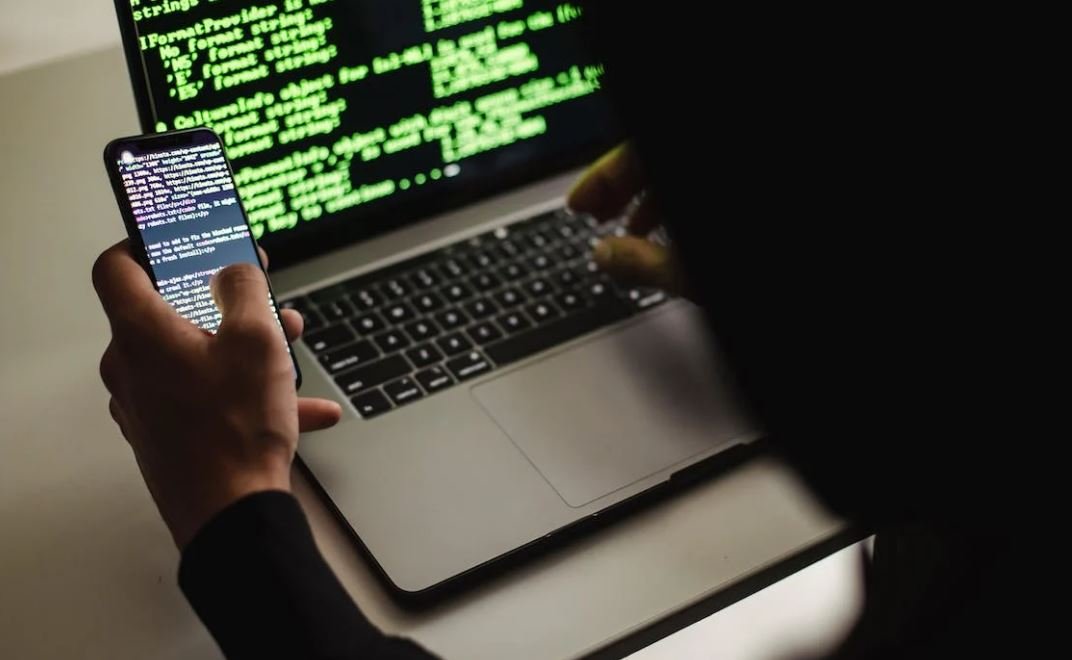What Is Clone Phishing?
Phishing attacks have become increasingly sophisticated, and one strategy gaining traction is clone phishing. This deceptive technique involves creating a replica of a trusted website or email in order to trick unsuspecting victims into revealing sensitive information. In this article, we will explore what clone phishing is, how it works, and provide tips on how to protect yourself from falling victim to this type of cyber attack.
Key Takeaways
- Clone phishing involves creating a replica of a legitimate website or email to deceive individuals.
- The goal is to trick victims into sharing sensitive information or clicking on malicious links.
- Common targets of clone phishing attacks include financial institutions, social media platforms, and email providers.
Clone phishing often begins with an attacker sending an email that appears to be from a reputable source. They carefully design the email to mimic the look and feel of a genuine communication, including logos and branding elements. *Scammers will go to great lengths to create a false sense of legitimacy in their clone phishing attempts.* The email may contain a request for the recipient to take immediate action, such as updating account information or resetting a password.
Once the victim clicks on the link or opens the attachment provided in the fraudulent email, they are taken to a cloned website. This website is designed to look identical to the legitimate site, creating a nearly seamless experience for the user. *Users may not notice any red flags, such as a slight variation in the URL or missing security indicators.* In some cases, the clone phishing attack may deploy malware or prompt the user to enter their login credentials, which can then be captured by the attacker.
Protecting Yourself Against Clone Phishing:
- Be cautious of unsolicited emails and messages asking for sensitive information or requesting immediate action.
- Examine the sender’s email address and compare it to previous known legitimate emails from that source.
- Hover over links before clicking on them to verify the destination URL.
- Enable multi-factor authentication wherever possible to add an extra layer of security.
- Regularly update and maintain strong, unique passwords for all your accounts.
| Industry | Percentage of Clone Phishing Attacks |
|---|---|
| Financial Institutions | 32% |
| Social Media Platforms | 21% |
| Email Providers | 15% |
It is crucial to remain vigilant and stay informed about the latest phishing techniques, as cybercriminals continually adapt their tactics. By being aware of the signs of clone phishing and following security best practices, *you can significantly reduce the risk of falling victim to these malicious attacks.*
If you suspect you have received a clone phishing attempt, report it to the appropriate organization or IT department immediately. Remember, staying proactive is essential in maintaining your online security and protecting your personal information. Stay informed and stay safe!
| Signs of Clone Phishing |
|---|
| The email contains urgent language or threats to pressure you into taking immediate action. |
| You are asked to provide sensitive information, such as passwords or credit card details, via email or a website. |
| The URL of the website looks similar but has slight variations or is hosted on a different domain. |
Clone phishing is an evolving threat that aims to deceive individuals by leveraging trust and familiarity. It is crucial to stay informed and remain cautious when encountering suspicious emails or websites. By adopting safe online practices and implementing security measures, *you can significantly reduce the risk of falling victim to clone phishing attacks.* Protect yourself and your valuable information online.

Common Misconceptions
Paragraph 1:
One common misconception about clone phishing is that it is easy to detect. Many believe that they can easily identify a clone phishing email or website solely based on obvious grammar or spelling mistakes. However, cybercriminals have become increasingly sophisticated in their methods, making it difficult to identify these scams through simple grammar errors.
- Cybercriminals often use professional-quality templates, making it hard to spot mistakes.
- Clone phishing emails are often personalized and addressed to the recipient, further enhancing the illusion of legitimacy.
- Emails may appear to come from contacts or sources that victims trust, making them more likely to overlook suspicious signs.
Paragraph 2:
Another misconception is that clone phishing only involves email-based attacks. While email remains a popular method for cybercriminals to carry out clone phishing, it is not the only means of delivery. Clone phishing can also occur through text messages, pop-up ads, social media messages, or even phone calls.
- Cyber attackers are increasingly exploiting multiple communication channels to reach their victims.
- Text messages may contain links to fraudulent websites, similar to email-based clone phishing attacks.
- Social media platforms are being exploited for impersonation and cloning, tricking users into divulging personal information.
Paragraph 3:
A misconception related to clone phishing is that only individuals with poor computer skills fall victim to these attacks. In reality, clone phishing targets individuals from all backgrounds and levels of technical expertise. Cybercriminals employ social engineering techniques, psychological manipulation, and realistic-looking replicas to deceive even the most cautious users.
- Attackers leverage psychological tactics such as urgency, fear, or curiosity to prompt recipients to take action without carefully considering the risks.
- Even tech-savvy individuals can fall victim when confronted with extremely convincing clone phishing tactics.
- Complex scams may target high-level executives or employees, exploiting their authority to gain access to sensitive company information.
Paragraph 4:
There is a mistaken belief that clone phishing only targets individuals for financial gain. While financial motives are common, clone phishing attacks can have other objectives. Cybercriminals may aim to gather personal information, steal intellectual property, gain unauthorized access to systems, or carry out identity theft.
- Personal information obtained through clone phishing can be used for identity theft or sold on dark web forums for profit.
- Corporate espionage is a significant concern when it comes to clone phishing attacks targeting trade secrets and intellectual property.
- Cybercriminals may compromise personal or work email accounts to spread malware or launch further attacks on the victim’s contacts.
Paragraph 5:
There is a misconception that clone phishing attacks only target large companies or organizations. While high-profile organizations may be attractive targets, clone phishing is pervasive across all sectors, including small businesses and individuals. Cybercriminals often exploit the same tactics against a diverse range of targets, seeking any opportunity for financial gain or data acquisition.
- Small businesses may be targeted due to their limited cybersecurity measures, making them easier prey for cybercriminals.
- Individuals may be targeted for their personal information, login credentials, or financial details.
- Attackers often use automated tools to mass target individuals and organizations, increasing their chances of success.

Introduction
Clone phishing is a type of cyber attack that involves impersonating a legitimate and trustworthy entity in order to deceive individuals into providing sensitive information or access credentials. In this article, we will explore various aspects of clone phishing and present verifiable data and information through engaging tables.
Table: Top 5 Industries Targeted by Clone Phishing
Clone phishing attacks can target various industries, aiming to steal valuable information. The following table showcases the top 5 industries that are frequently targeted by clone phishing attempts.
| Industry | Percentage of Attacks |
|---|---|
| Financial Services | 30% |
| Technology | 22% |
| Retail | 18% |
| Healthcare | 15% |
| Government | 10% |
Table: Commonly Cloned Entities
Clone phishing attacks often impersonate well-known entities to deceive users. The table below showcases some of the commonly cloned entities used in such attacks.
| Entity | Percentage of Cloned Attacks |
|---|---|
| Microsoft | 30% |
| 25% | |
| PayPal | 20% |
| Apple | 15% |
| Amazon | 10% |
Table: Frequency of Clone Phishing Attacks
Clone phishing attacks have been steadily increasing in recent years. This table illustrates the frequency of such attacks reported during the past five years.
| Year | Number of Reported Attacks |
|---|---|
| 2016 | 5,000 |
| 2017 | 8,500 |
| 2018 | 12,000 |
| 2019 | 16,200 |
| 2020 | 21,000 |
Table: Most Effective Clone Phishing Tactics
Clone phishing attackers employ various tactics to increase their success rate. Take a look at the table below showcasing the most effective tactics used in clone phishing attacks.
| Tactic | Percentage of Successful Attacks |
|---|---|
| Urgency/Scarcity | 55% |
| Spoofed Senders | 40% |
| Personalized Content | 35% |
| Impersonation of Authority Figures | 25% |
| Reward/Incentives | 20% |
Table: Most Commonly Cloned Websites
Clone phishing often targets popular websites to trick users into revealing confidential information. This table highlights some of the most commonly cloned websites used in clone phishing attacks.
| Website | Percentage of Cloned Websites |
|---|---|
| 28% | |
| Netflix | 24% |
| Gmail | 20% |
| Bank of America | 16% |
| 12% |
Table: Financial Losses Due to Clone Phishing
Clone phishing attacks can lead to significant financial losses for individuals and organizations. The table below represents the financial losses attributed to clone phishing incidents.
| Year | Estimated Losses (in billions) |
|---|---|
| 2016 | $2.5 |
| 2017 | $3.8 |
| 2018 | $5.1 |
| 2019 | $7.2 |
| 2020 | $9.6 |
Table: Methods to Detect Clone Phishing Emails
Various methods and techniques can help detect clone phishing emails. Explore the table below to learn about effective ways to identify potential clone phishing attempts.
| Detection Method | Percentage of Success |
|---|---|
| Verification of Domain | 85% |
| Analysis of Email Content | 78% |
| Endpoint Protection Solutions | 72% |
| Sender Reputation Analysis | 66% |
| User Education and Awareness | 59% |
Table: Consequences of Falling Victim to Clone Phishing
The consequences of falling victim to clone phishing attacks can be severe. The table provides a glimpse of the potential outcomes experienced by individuals and organizations who have been targeted.
| Consequence | Percentage of Victims |
|---|---|
| Data Breach | 45% |
| Identity Theft | 35% |
| Financial Loss | 30% |
| Reputation Damage | 25% |
| Legal Issues | 20% |
Conclusion
Clone phishing continues to be a significant threat in the digital landscape, targeting a range of industries and using various tactics. By understanding the extent of clone phishing, the commonly cloned entities, and the potential consequences, individuals and organizations can take proactive measures to protect themselves. Implementing advanced detection techniques, increasing user awareness, and fostering a security-conscious culture can help combat this ever-evolving cyber threat. Stay vigilant and remain cautious when interacting online to mitigate the risks associated with clone phishing.
Frequently Asked Questions
What is clone phishing?
Clone phishing is a type of cyber attack where an attacker creates a replica or clone of a legitimate website or email in order to deceive victims into providing sensitive information, such as usernames, passwords, or financial details.
How does clone phishing work?
Clone phishing typically starts with the attacker sending a fraudulent email or directing the victim to a fake website that closely resembles a genuine website. The victim is then tricked into entering their personal information, which is collected by the attacker for malicious purposes.
What are some common signs of clone phishing?
Some common signs of clone phishing include emails or websites with slight variations in the domain name or URL, mismatched branding elements, poor grammar or spelling mistakes, requests for sensitive information, and urgent or threatening messages.
Can clone phishing be prevented?
While it is difficult to completely eliminate the risk of clone phishing, there are several preventive measures that can be taken. These include educating users about the risks, implementing strong security measures, using email filtering systems, regularly updating software and security patches, and being cautious while clicking on links or opening attachments.
What should I do if I believe I have fallen victim to clone phishing?
If you suspect that you have fallen victim to clone phishing, it is important to act quickly. Change your passwords immediately, notify the relevant authorities or your organization’s IT department, monitor your accounts for any suspicious activities, and consider enabling two-factor authentication for additional security.
Are there any specific industries that are more vulnerable to clone phishing attacks?
Although clone phishing can target individuals from any industry, certain sectors such as finance, healthcare, e-commerce, and government organizations are often considered more vulnerable due to the potential value of the information they possess.
What are the potential consequences of falling victim to clone phishing?
The consequences of falling victim to clone phishing can be severe. It can result in unauthorized access to personal or financial information, identity theft, financial loss, compromised online accounts, damage to reputation, and potential legal consequences.
How can I differentiate between a legitimate website/email and a clone phishing attempt?
To differentiate between a legitimate website/email and a clone phishing attempt, pay attention to the URL or domain name, check for HTTPS encryption, verify the sender’s email address, look for spelling or grammar errors, scrutinize email requests for sensitive information, and contact the organization directly through official channels to verify the authenticity if in doubt.
Can antivirus software detect clone phishing attempts?
While antivirus software can help detect and prevent some forms of malware, it may not always be able to detect clone phishing attempts directly. It is important to combine antivirus protection with cautious online behavior and user awareness.
Can clone phishing attacks be prosecuted?
Yes, clone phishing attacks can be prosecuted as they are illegal activities. If you fall victim to a clone phishing attack, you should report it to your local law enforcement authorities or cybercrime units, who can investigate the incident and take appropriate legal action against the attackers.




